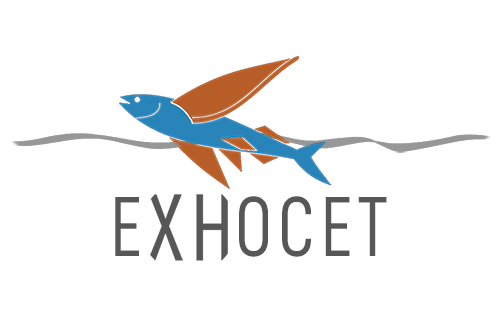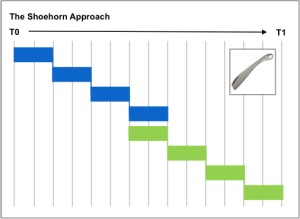Why project and change management continue to fail
According to research, around 70% of change management programs tend to fail. Amongst the numerous reasons for failure, there is the lack of integration between project management and change management. Adopting an integrated approach will have a dramatic impact on quality, speed, effectiveness and sustainability of the overall change. We'll provide you with 5 simple rules that will dramatically reduce the risks and uncertainties of your transformation projects.
Recognise two disciplines, one objective
Project management and change management have the same objective: increase the probability that projects or initiatives deliver the intended results and outcomes. But their focus is different. Project management mostly focuses on the technical side to ensure that the solution will be developed, designed and delivered effectively. Change management focuses on the people side to ensure that the solution will be embraced, adopted and sustainably used by the co-workers who will have to work differently. It seems quite obvious that both should act in an integrated, coordinated way to produce the desired results. However, we to often see situations where change management is being seen as a sub track of the overall project management.
Don't mess it up with a shoehorn approach
Too often change management tracks are considered as simple sub tracks of the larger project plan, mostly situated in the lower half or near the end of the project plan. When the project or the solution is getting its final forms, change managers start to think about how they are going to sell it to the organisation. Change management programs are being put in place, but there is not much room for change left. The change program is already tied into the boundaries of all the irreversible decisions that have been taken since the early beginning of the project. So room for manoeuvres, for creating acceptance and adoption, is extremely limited. It’s called “change”, but in fact it’s not much more than a “take it or leave it” game. As a result, adaptation and sustainable change will often be extremely low. It's a bit like getting your feet into a too small pair of shoes. Even if you manage to get them in, you will probably not wear them very often.
Get the benefits of an integrated approach
In an integrated approach, the change management tracks are moved to the upper left corner of the project plan, and then deployed in an interwoven way with the project planning. In this approach, change management is being taken into account as from the first day of the project. Project management and change management will interact during the whole duration of the project as two equal forces aiming at the same objective. To achieve this stakeholders and impacted populations will be highly involved from the beginning of the project. Their role changes from "subject" to "participant", from "client / provider" to "co-creator". Considered either from the technical or from the people perspective, this integrated and participative approach will have dramatic benefits on the quality, speed, effectiveness and sustainability of your project.
Benefit #1: quality of deliverables
Classic, waterfall based project management approaches are based on the assumption that all previous steps are the golden standard for the next steps. After functional analysis (which is often a private party between business analysts and IT), end users don't hear about the project anymore until it goes into user acceptance. The reality is that, all along the development process, small distortions will have appeared. Altogether they will have created a huge gap between what the end user was looking for and what will finally have been developed. By integrating change management from the beginning of the project, you make sure that these small distortions are intercepted and corrected on time, thus leading to a higher quality of deliverables.
Benefit #2: speed
It might seem contradictory that you can gain speed by doubling the project management tracks with parallel change management tracks. However, the fact that change will have been integrated from the beginning saves a lot of time for change once the project is being delivered. You don't start from a "take it or leave it" situation, most of the change will already have been accomplished during the project development.
Benefit #3: effectiveness
As the project has not been developed "for", but "in strong collaboration with", stakeholders and impacted populations, the chances that the developed solution is the right answer to what the project was aiming at are much higher. The integrated approach increases your chances of being right from the first time.
Benefit #4: sustainability
Finally, because of the strong integration of project management and change management, the better quality and increased effectiveness, the change will be embraced and adopted in a much more sustainable way on the long term.
5 simple rules to get there
Rule #1: Organise your project and change management differently
As described above, make sure that your project management and change management are integrated in methods, tools and processes, both for progress steering and monitoring. If you are using a project management tool, make sure that both the project management and the change management tracks are integrated and shared in the same tool.
Rule #2: Create the right environment
Over the years most companies, because of the complexity of their processes, have built thick walls between their different departments. Sales, marketing, IT, operations, HR have been used to do things on their own, reducing dialogue with the other disciplines to a strict minimum, based on a kind of naïve belief that this would lead to better performance. But your business performance, the added value for clients and shareholders, is the result of the way these disciplines interact as a whole. The importance of these interdependencies even increases with the growing influence of digital evolution and of customer expectations on your business. So it is of utmost importance that people from different disciplines are in permanent dialogue with each other during the project, far beyond the sparse moments of dialogue that checkpoint meetings and other steering committees pretend to be. It is only in an environment where there is a permanent concern for the business as a whole (and not only for the own discipline) that project management and change management can naturally act together and achieve a common goal.
Rule #3: Recognise the importance of sustainable adoption
A technical development or a new process is never a solution on its own; it is only a part of it. Without sustainable adoption of the solution or process, the only place where you will see the impact of your project will be in the depreciation section of your balance sheet. You will never get an increase in effectiveness, speed, customer satisfaction or cost efficiency without sustainable adoption by the employees who will have to use the technical solution or follow the new process. One simple way to do this is to request that all project induction documents address the approach for sustainable adoption as from the very beginning.
Rule #4: Have a relevant and shared definition of results for accountability
It is common to define results and accountability in a very restrictive way. Project managers will often focus on deadlines, milestones, go-live dates. They are important, but they are not relevant as such for your business. The same goes for the indicators on which change managers will be accountable: is it really the number of communications they issued or the number of people that got training that will be relevant? Quality, effectiveness and sustainable integration of the solution are much more relevant to the organisation and should be the main indicators for which both project managers and change managers should be held accountable. For this rule as well, create à PID template which contains the right and relevant KPI's that will foster this shared accountability.
Rule #5: Hire the right profiles
Project managers tend to be selected on their certifications in a number of methodologies or on their knowledge of specific technical environments. Change managers are expected to be good at interviews and presentations, transforming the business reality into an appealing story. But as demonstrated above, there is a need for project managers and change managers willing to focus, not on a go-live date or on the number of training sessions, but on maximizing the chances that projects or initiatives will deliver the intended results and outcomes for the business as a whole.
Where will this get you?
Integrating change management into your project management from the early start will dramatically reduce the risks and uncertainties of your transformation projects. But you will have to create the right conditions for it to happen: ensure real dialogue between all the stakeholders, define relevant indicators for accountability and get the right profiles on board for both project and change management. If you pay enough attention to these critical success factors, you will maximize the chances that your transformation projects will lead to an effective change and to tangible and sustainable results for your organisation.


